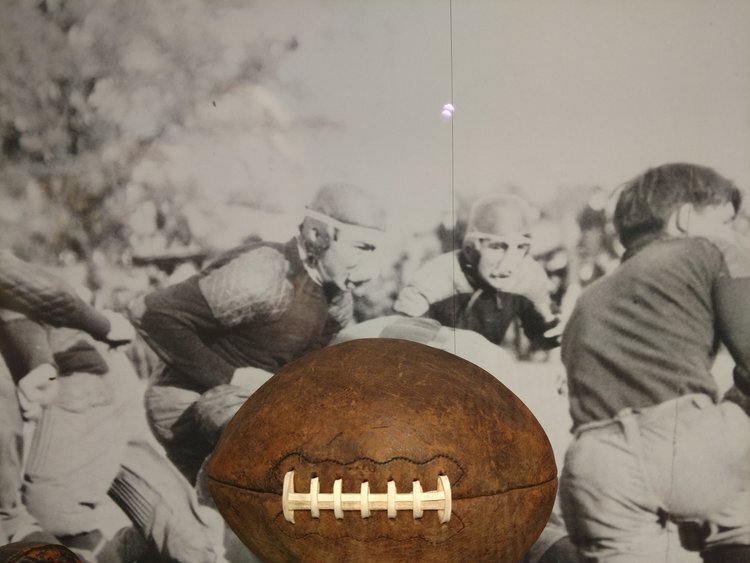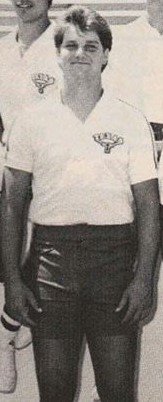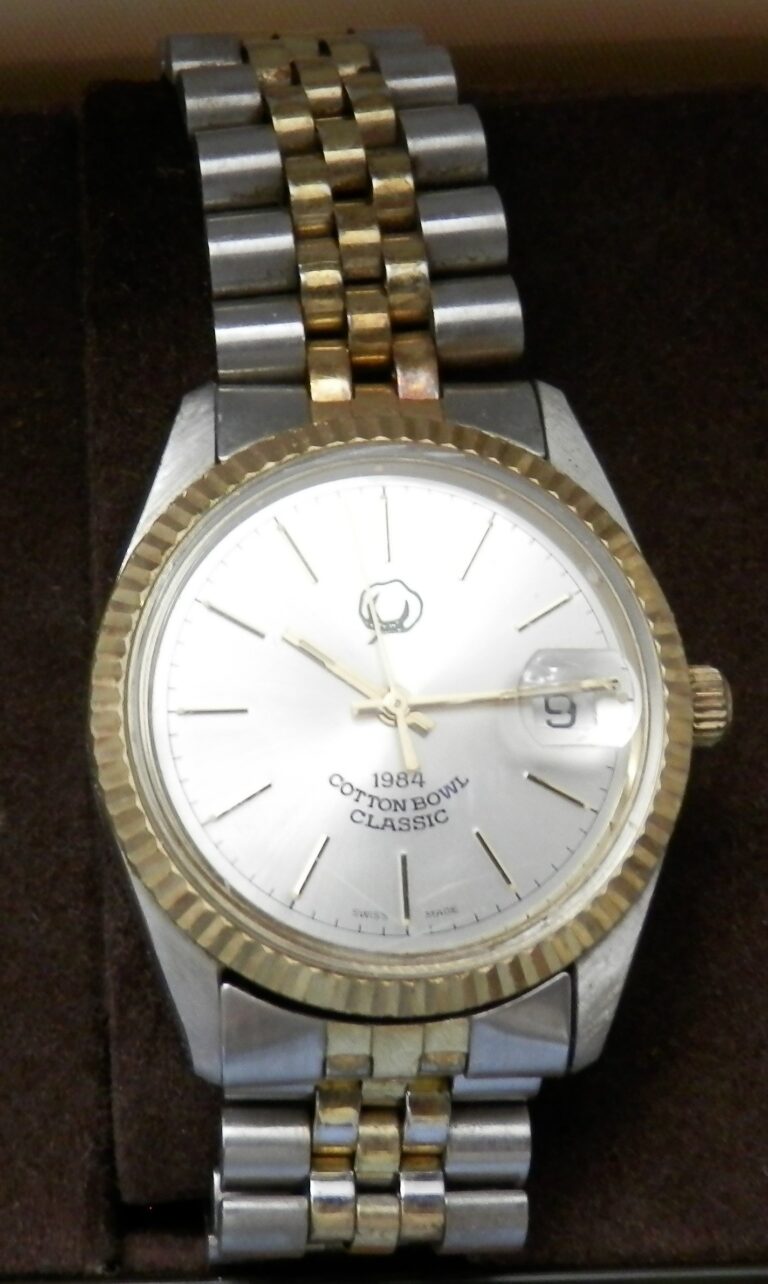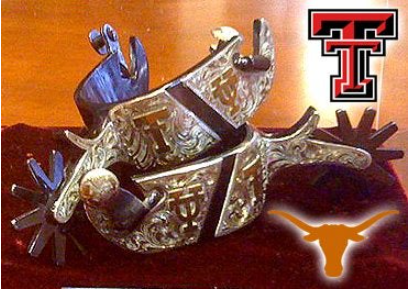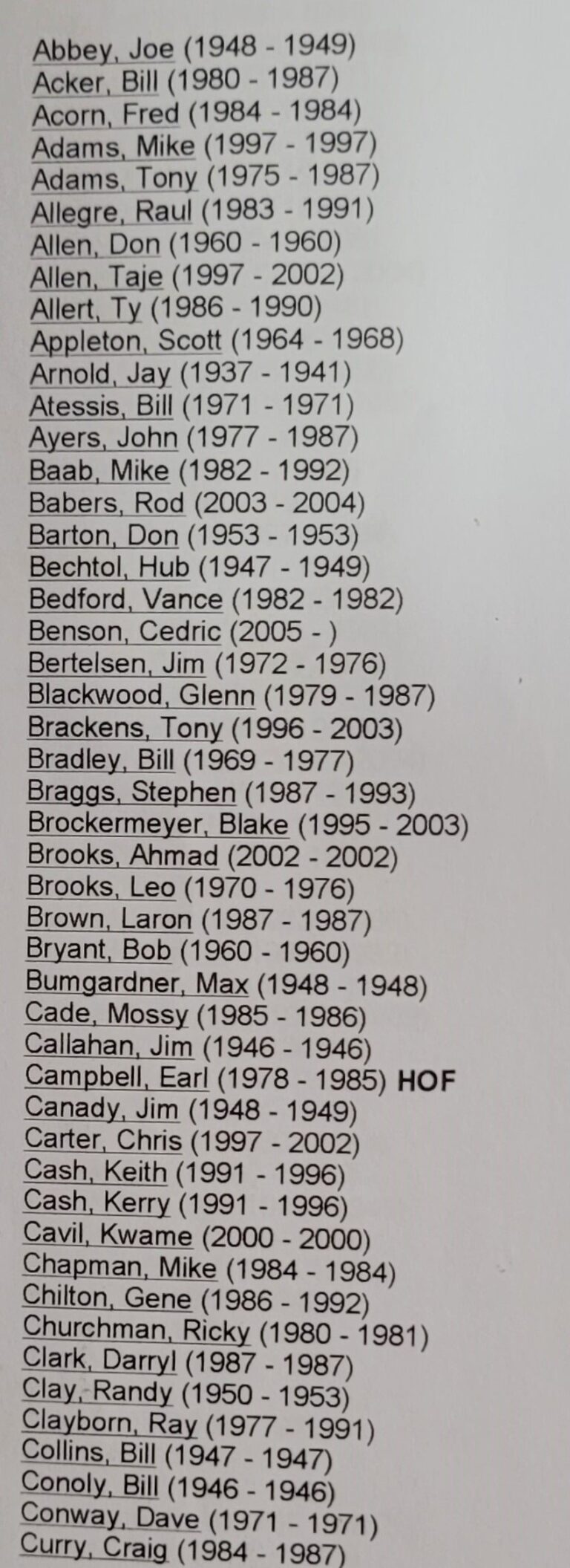Helmets, jerseys, shoes, and more
The Face Mask Enigma
I visited the LBJ Library looking for text or photos to add to the TLSN history of Longhorn sports website. I was not disappointed. The image depicted in the LBJ Library states, “This mask was used from the 1890s thru the 1920s.”
It took me a few seconds to assimilate the image’s import. Staring back at me on a wall was a photo of a football game played in 1896. Some football players wore devices to protect their nose and mouth, and what appeared to be helmets. Even as an amateur Longhorn sports historian, I knew this photo was significant.
History explains the illusion of the helmet depicted in the photo. During this era, the players grew their hair longer and wrapped bandages around their heads and over the tops of ears. This process pushed the hair up into a mop adding sufficient cushioning to prevent severe injuries.
But what about the mouth and nose protector? If players in 1896 were smart enough to protect their nose and mouth, why did the players from 1930 through the early 1950s refuse to wear them? 1895 football player, Walter Fisher and Hall of Honor inductee said “the communal rubber nose protector the players wore wasn’t worth a darn. “those louts on the other team would get ahold of it, pull back and turn it loose.”
For more information on helmets, jerseys, and shoes, visit
https://www.texaslsn.org/helmets-jerseys-shoes-and-more
Uniforms and Helmets thru the years
The first helmet was thick hair.
A glaring omission from the Longhorn uniform was something to shield the head. While a few players strapped nose guards over their faces, most went without any protection. Instead, they grew their hair longer, wrapped bandages around their heads and over the tops of ears (to prevent ears from being pulled and torn), which pushed the hair up into a mop. The mat of hair was supposed to be sufficient cushioning to prevent severe injuries.”
This was the 1900 football uniform with thigh pads, wool socks, and thick hair to absorb impact.
Top left – 1900 “Boston style padded head harness.”
Top Center- 1910_ “The flat top.”
Top Right- 1918- designed after WWI, the helmet’s inspiration was the protective headgear for the pilots flying the newest technology – planes. This helmet is the grandfather to all future helmets.
Bottom Left- 1925- This helmet had padding inside to cushion the blow.
Bottom left center- 1932- made of leather with the first chin strap.
Bottom right center- Post-war breakthrough in helmets. Plastic replaces leather. Protective features enhanced the structure of this helmet.
Lower right- 1960’s – The helmet has a faceguard, shock absorbers that protect the top, bottom, side, and back of the helmet.
In 1969 helmets cost $30, shoulder pads $35.00, jerseys $10.00, and shoes $20.00.
In 1928 Coach Littlefield discard the leathery chest patches going to large contrasting vertical bars on the chest and sleeves. He also changed the dye used to color the jerseys to a Texas orange- -the shade of burnt orange now worn by the Horns. (see image below for 1928-1933.




Longhorn football player Dean Campbell’s Coaching career is reflected in the mini-helmets on a shelf above his fire Place.
The uniforms evolved between 1896 and 1897. The pants were made with heavy drab moleskin, with the hips and knees heavily padded with fine curled hair and thighs with light padding. The shoes were kangaroo leather with cleats on the heel and toe. Shin guards were made of canvas, moleskin or leather. The jacket was made of heavy duck or canvas, and the nose guard of rubber. The players wore stockings of several colors .
Click on the arrows below to move forward and backward in time to view some of the helmets and uniforms during each period.



























Horn Uniforms and helmets thru the years
Mark Walters knows first hand that the University of Texas is looking for more immediate answers in designing a safer football helmet. UT is working with equipment company Riddell to evaluate head trauma during collisions at practice. During practices, when contact happens, data is sent to handheld devices monitored by the training staff. The staffers say if the hit is hard enough, it will generate a signal on the device. However, if the hit was on the side of the helmet but the magnitude of the hit wasn’t as high, no data would register. Equipment research and design is a never-ending process. To keep up with the ever-increasing, stronger, faster, more powerful athlete, the University of Texas continues to advance the future of helmet sports science.
Baseball
1992 – work-out uniform
